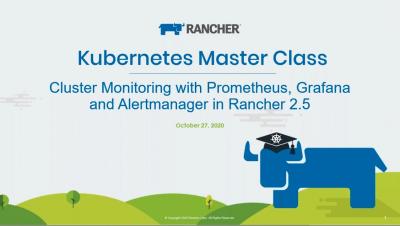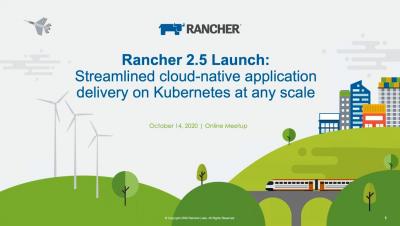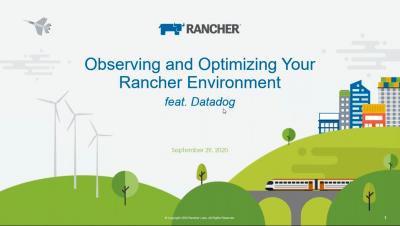Operations | Monitoring | ITSM | DevOps | Cloud
November 2020
What's Cool in Rancher 2.5? A Partner Perspective from SVA
Since 2014, Rancher Labs has been making it easier for IT professionals to handle containers. Until now, every release of their flagship product, Rancher, brought features that you wouldn’t want to be without. But the latest releases have really taken things up a few notches.
Three Reasons Why Hosted Rancher Makes Your Life Easier
Today’s generation of makers, artists and creatives have reinforced the idea that great things can happen when you roll up your sleeves and try to learn something new and exciting. Kubernetes was like this only a couple of years ago: the mere act of installing the thing was a rewarding challenge. Kelsey Hightower’s Kubernetes the Hard Way became the Maker’s handbook for this artisan craft.
Introducing Rancher on NetApp HCI: Hybrid Cloud Multicluster Kubernetes Management with Push-Button Ease
If you’re like me and have been watching the odd purchasing trends due to the pandemic, you probably remember when all the hair clippers were sold out — and then flour and yeast. Most recently, you might have seen this headline: Tupperware profits and shares soar as more people are eating at home during the pandemic. Tupperware is finally having its day. But a Tupperware stacking strategy is probably not why you’re here.
Rancher Online Meetup - October 2020 - Scale Kubernetes Anywhere With Rancher 2.5
Scaling Fleet and Kubernetes to a Million Clusters
We created the Fleet Project to provide centralized GitOps-style management of a large number of Kubernetes clusters. A key design goal of Fleet is to be able to manage 1 million geographically distributed clusters. When we architected Fleet, we wanted to use a standard Kubernetes controller architecture. This meant in order to scale, we needed to prove we could scale Kubernetes much farther than we ever had.
Maximize Monitoring in Rancher 2.5 with Prometheus
We dedicate a lot of space in our blog to the topic of monitoring. That’s because when you’re managing Kubernetes clusters, things can change quickly. It’s important that you have tools to monitor the health and resource metrics of your clusters. In Rancher 2.5, we introduced a new version of our monitoring based on the Prometheus Operator, which provides Kubernetes-native deployment and management of Prometheus and related monitoring components.
Monitor Distributed Microservices with AppDynamics and Rancher
Kubernetes is increasingly becoming a uniform standard for computing – in Edge, in core and in the cloud. At NTS, we recognize this trend and have been systematically building up competencies for this core technology since 2018. As a technically-oriented business, we regularly validate different Kubernetes platforms and we share the view of many analysts (e.g. Forrester or Gartner and Gartner Hype Cycle Reports) that Rancher Labs ranks among the leading players in this sector.
KMC - Observing and Optimizing Your Rancher Env (with Datadog)
Set up Your K3s Cluster for High Availability on DigitalOcean
In this post, we will outline a reference architecture for setting up K3s in a High Availability (HA) configuration. This means that your K3s cluster can tolerate a failure and remain up and running and serving traffic to your users. Your applications should also be built and configured for high availability, but that is beyond the scope of this tutorial. K3s is a lightweight certified Kubernetes distribution developed at Rancher Labs that built is for IoT and edge computing.











